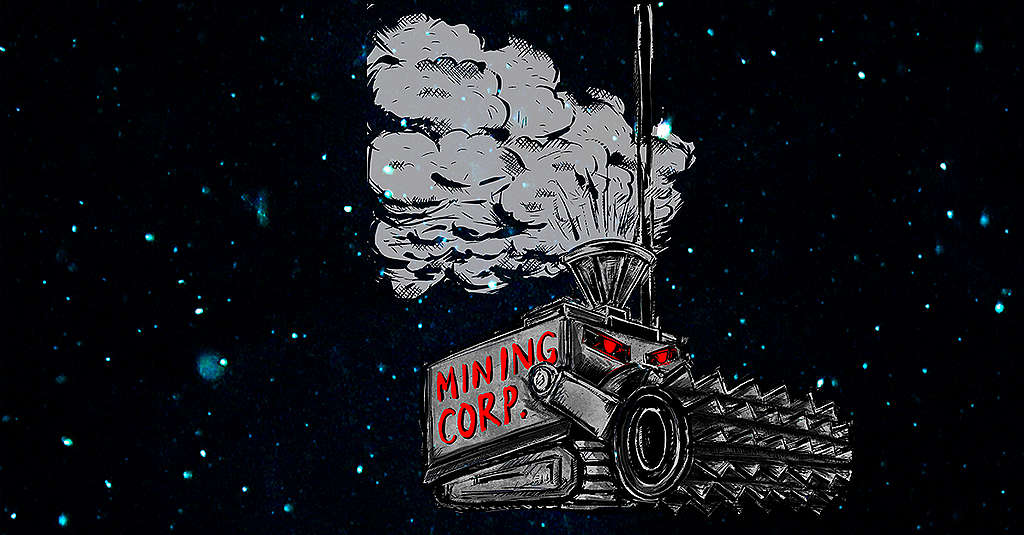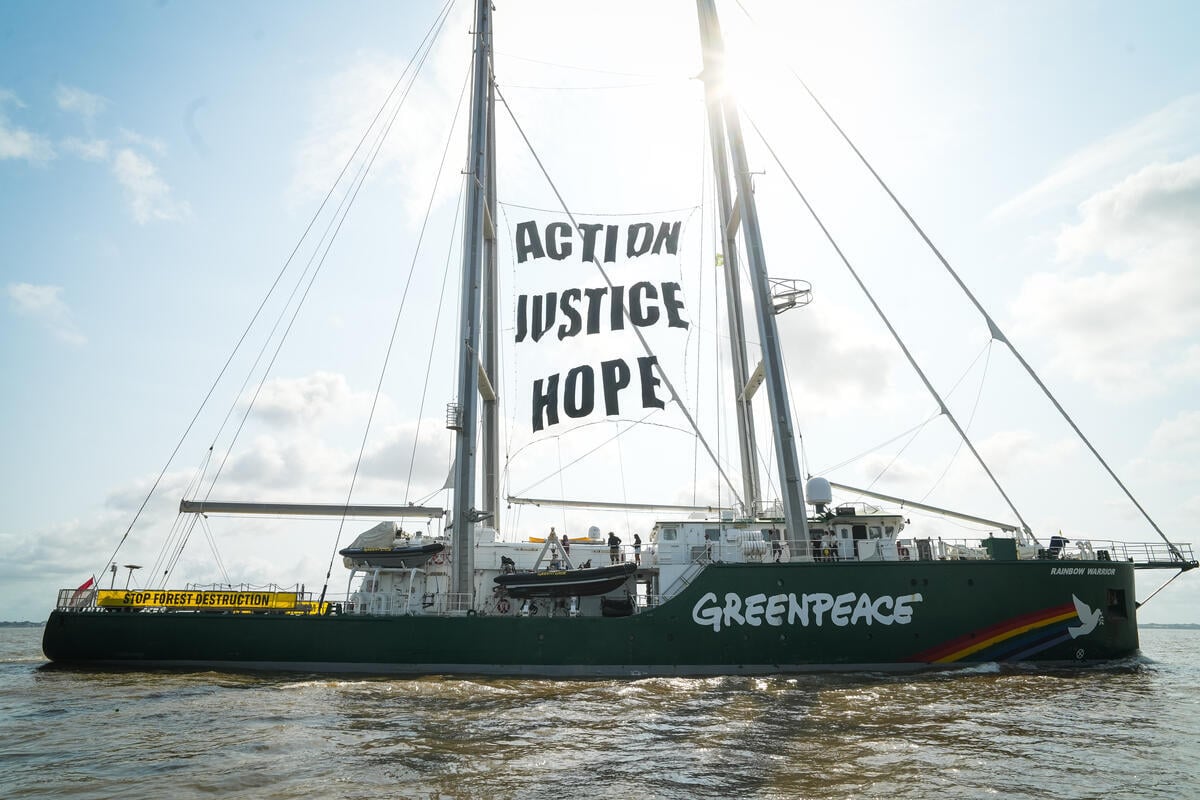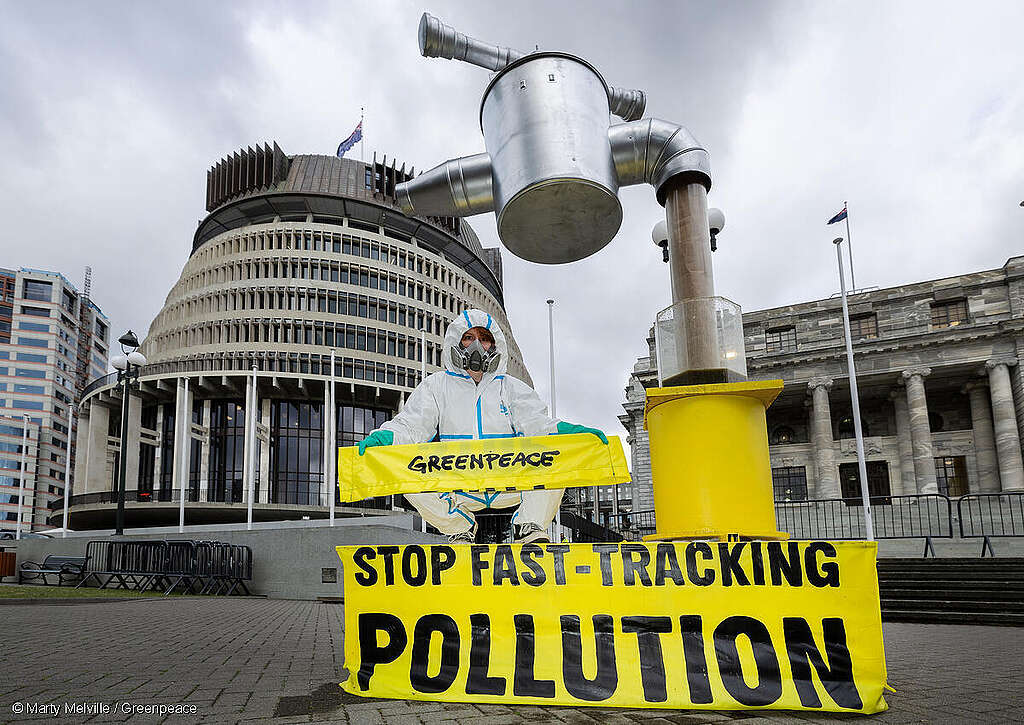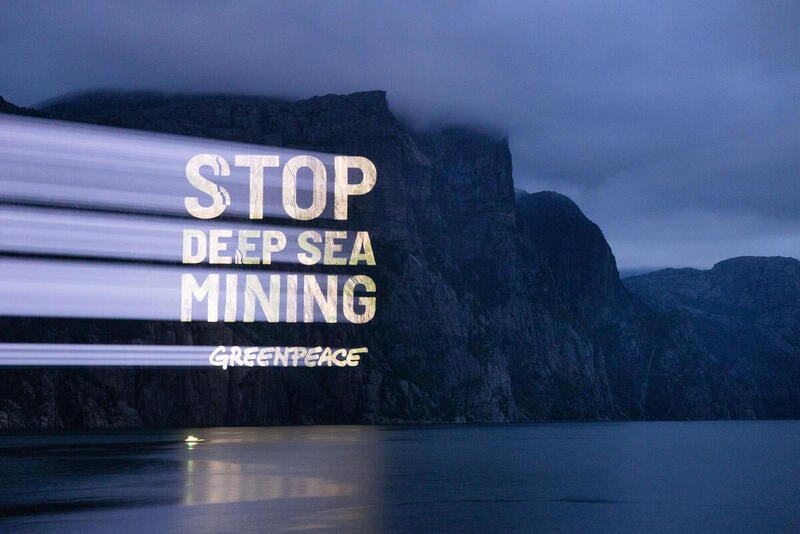On 10 July 2025 in a dawn ceremony led by Ngāti Whātua Ōrākei, we commemorated the 40th anniversary of the state-sanctioned bombing of the original Rainbow Warrior in Auckland, and photographer Fernando Pereira, whose life was taken in this terrorist act by French agents.
The bombing at Marsden Wharf was the French government’s brutal attempt to silence Greenpeace’s growing influence in the global anti-nuclear movement. It failed. Instead, it galvanised people across Aotearoa and the Pacific, helping to secure one of the most powerful legacies of people power: a nuclear-free Pacific. That spirit of resistance lives on, and it is needed now more than ever. As our executive director Russell Norman says:
“We cannot be silenced because we are a movement of people committed to peace and to protecting Earth’s ability to sustain life, protecting the blue oceans, the forests and the life we share this planet with…”
Seabed and deep sea mining – new forms of exploitation
Today, Indigenous Peoples and communities across the Pacific face a new wave of exploitation – seabed and deep sea mining – and the same questions that sparked widespread opposition to nuclear power, rise again. Who benefits? Who bears the risks? What happens to our homes? And who gets to make these decisions?
As an Indigenous Pacific campaigner, I see the parallels between nuclear colonisation and the mining of the seafloor. To us, the seabed and deep seas aren’t frontiers to be ‘conquered’, it’s a sacred space, central to our identity and sustenance, holding stories of who we are and our traditional Indigenous knowledge. Our relationship with the moana is grounded in whakapapa.
The push to mine the ocean floor isn’t progress, nor is it innovative. It’s just a new iteration of old ideas with a poor track record when it comes to human rights and environmental degradation.
The Pacific rises against seabed mining
Seabed mining is another form of colonisation and extraction, driven by greed, powered by distant governments and corporations and rooted in worldviews that dismiss Pacific Peoples and our birth-righted authority and custodial responsibilities over Te Moananui a Kiwa (the Pacific Ocean).
The companies and states behind this rush are ignoring the valid concerns about deep sea mining , just as they once ignored the radioactive fallout from nuclear testing. Once again, Pacific communities are expected to carry the burden. But we say no.
In Aotearoa, all eight iwi of Taranaki say no to Trans-Tasman Resources (TTR), who have been trying to mine the seabed of the South Taranaki Bight. TTR failed time and again because people power from mana whenua and the broader Taranaki and coastal communities have prevailed.
Further afield, Indigenous Pacific communities are opposing The Metals Company and other wannabe deep sea miners who use false solutions to greenwash the destruction they will cause to dismiss our rights, and plunder our homes. Rights to Free, Prior and Informed Consent. Homes that we say are more ocean than land. Rights to justice, security and to protect our livelihoods for future generations. Our homes that others outside of the Pacific say are empty, and ‘no one lives there’.
Rainbow Warrior – symbol of resistance
I was only four years old when the French government bombed the Rainbow Warrior, and I wasn’t living here in Aotearoa, so my understanding of what happened has been dependent on mainstream information as I grew up. It hasn’t always fairly represented what I now know was a significant moment for Aotearoa and the Pacific, and Greenpeace, and also the enduring strength of people power. Over recent weeks I’ve been able to hear experiences and reactions from people who remember the bombing well and were propelled into action.
Greenpeace was attacked because it was effective. The Rainbow Warrior had become a symbol of resistance, sailing to nuclear test sites and standing in solidarity with Pacific Peoples and communities resisting the violence of nuclear colonialism.
Pacific resistance continues
Last year I had the privilege of attending a conference at Te Hui Oranga o Te Moana Nui a Kiwa – the resurgence of the first pan-Pacific Indigenous anti-nuclear gathering, first held in 1983. It brought together rangatira, activists, and knowledge holders from across the Pacific to affirm our shared connection to the ocean and to reject the colonisation of our waters. That hui helped forge the united resistance that made the Pacific a nuclear-free zone, and acknowledged the latest dangers including seabed and deep sea mining. It remains a powerful example of what Indigenous-led movements can achieve when grounded in solidarity, mana, and whakapapa.
These two legacies live on today. Not only in the ship’s return to Auckland this month, but in our younger Pacific generations injecting energy into frontline battles being fought across the Pacific against today’s threats.
Nuclear free campaign a blueprint for resisting seabed mining
The anti-nuclear campaign’s success must be remembered not only as a historical milestone, but as a blueprint for today’s resistance. From rising militarisation to extractive industries carving up the ocean floor, Pacific Peoples’ homes are again being targeted through a lens of exploitation and profit. But once again, communities are standing up and refusing to be sidelined.
Public opposition to seabed and deep sea mining is clear
At the recent International Seabed Authority (ISA) Council meeting in Jamaica, governments met under intense pressure from wannabe deep sea mining companies to finalise a so-called Mining Code. But the global tide is turning. Public opposition is louder than ever, and frontline Indigenous voices are breaking through. The meeting ended with a clear message: this destructive industry won’t be rubber-stamped any time soon.
Here in Aotearoa, that global resistance has a local front line. The fight against Australian company TTR and their plans for seabed mining in Taranaki is part of the broader movement. If the Luxon government and its low-bar Fast Track Approvals Act ignores the overwhelming evidence and green lights TTR to tear up 50 million tonnes of seabed every year, for 35 years, we risk legitimising deep sea mining across the region. It would set a dangerous precedent across the Pacific and the world.
Aotearoa is not separate from the Pacific – we’re part of it! Our histories, struggles, and futures are connected by whakapapa – our shared ancestry and wayfaring history – the currents, and community. Standing against extractive industry here is an act of solidarity with neighbouring Pacific nations and their rights.
Forty years ago, it was people power that won a nuclear-free Pacific. That same power lives in us today. I’ve learned during the Rainbow Warrior visit to Aotearoa that it’s not just a moment to ‘look back’. It’s a call to action, and it’s a reminder of our collective power and tenacity.
We’ve been handed the mānuka by all of those who came before us. To stop seabed mining in Aotearoa. To prevent deep sea mining in the Pacific. For allies like Greenpeace to stand with Indigenous Peoples defending their moana. And to resist the next wave of greed and exploitation.
To the next fight and show of people power and advocacy, the Rainbow Warrior sails again, and so will we.

It’s time for New Zealand to take a stand. Join our call on the New Zealand government to back a global moratorium on seabed mining.
Take Action



